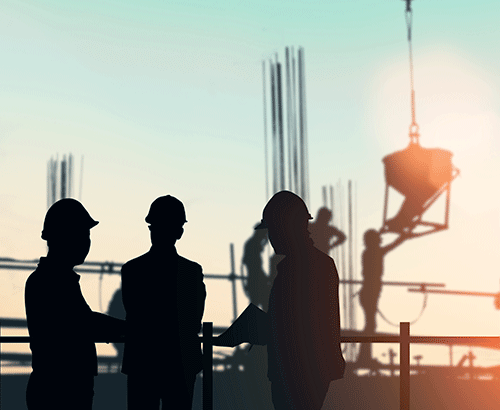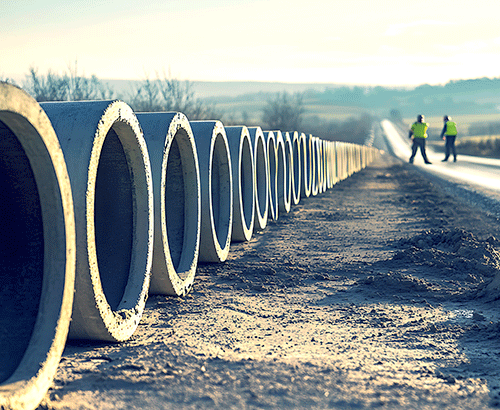The 2025 Tariff Resurgence: What It Means for Contractors

The 25% tariffs on steel and aluminum enacted March 12, combined with retaliatory measures from Canada and Mexico will likely increase costs, disrupt supply chains and compress margins for companies across the built environment. With more potential tariffs on the way April 2, it’s important for contractors to understand how these taxes will affect their bottom lines and strategies for combating negative effects.
To offset tariffs, contractors will likely need to revisit pricing models, implement escalation clauses and restructure financing. They’ll also need to explore alternative materials, such as lumber, and source inputs from countries not affected by the current round of tariffs.
Firms that proactively manage tariffs, communicate clearly with clients and provide flexible solutions for project challenges will strengthen their market positions and build long-term trust with clients.
Rising Material Costs
Tariffs imposed in 2018 pushed steel prices up 14% before dropping to a 10% increase at the end of 2019. To offset the increases, domestic suppliers filled the gaps since demand did not drop for steel. As builders saw higher project expenses, some projects were delayed or cancelled as owners grew wary of supply-chain disruptions.
Industry estimates suggest the current taxes will have similar effects of:
- Steel prices could rise 8.2%
- Aluminum costs may climb 5.7%
- Overall construction costs could increase 5% to 7%
Given that many contractors see margins of less than 5% on projects, significant cost increases could hamper overall profitability or cause delays in starts.
It’s also worth noting cost escalation differs by segment: Infrastructure and heavy civil projects, which depend on materials like rebar, structural steel and aluminum for bridges and rail, face direct cost inflation from tariffs.
Commercial building projects (offices, retail, hotels) also use steel for beams, studs and HVAC equipment, but sometimes have more flexibility in design or timing to mitigate costs. Still, both will feel the pinch.
Nonresidential building costs were already rising as of late 2024 due to general inflation, and tariffs add another price surge on top. Whether it’s a state transportation department reconsidering the budget for a highway project or a private developer re-evaluating the returns on a new high-rise, tariffs are now a key factor in 2025 cost calculations.
Supply Chain Disruptions
Firms heavily reliant on imported materials may face pricing volatility and extended lead times. Many are shifting to domestic suppliers, but U.S. mills have limited capacity, leading to bottlenecks and potentially even higher domestic prices. Some contractors are looking at alternative materials like mass timber or composite steel to reduce dependence on tariffed imports.
U.S. steel production, for example, was already near full utilization in late 2024; ramping up further may require time or reopening idled mills. Consequently, as everyone rushes to domestic sources, lead times can extend, and domestic prices can rise.
Industry reports note that some U.S. steel producers already raised prices in early 2025 in response to anticipated demand, knowing contractors have few other options. So while switching to domestic suppliers avoids the tariff tax, it doesn’t necessarily avoid cost increases – it can simply shift where the money goes. Material lead times are a big concern as well: what used to be an eight-week delivery for a steel joist from abroad might become a 12-week wait from a booked-solid U.S. plant unless contractors order well in advance. Firms that rely solely on domestic substitution without adjusting schedules or expectations could face delays.
Additionally, a separate 10% tariff on Chinese goods took effect in February, leading China to impose its own tariffs including a 15% duty on U.S. liquefied natural gas (LNG) and a 10% duty on agricultural machinery. These actions add to the supply chain instability affecting the construction industry.
Strategic Alternatives
While not comprehensive, there are strategies that contractors and other construction firms can consider when looking for ways to remain profitable in a rising cost environment.
Financial and Contractual Adjustments
- Escalation clauses: Firms can integrate escalation clauses into contracts to mitigate unexpected price hikes.
- Early procurement: Stockpiling key materials before prices surge can offset rising costs, but there are costs associated with storing these materials that should also be considered.
- Flexible financing: Some firms are securing larger contingency reserves to absorb cost fluctuations.
Diversifying Supply Chains
- Domestic sourcing: While shifting to U.S. suppliers avoids tariffs, domestic materials may also see price hikes due to increased demand.
- Alternative materials: Builders are exploring composite materials, engineered wood and fiberglass alternatives to reduce steel dependency.
- Broader supplier networks: Firms are qualifying multiple suppliers to avoid bottlenecks.
Transparency with clients about cost increases and project risks is crucial. Contractors who proactively discuss tariff risks and mitigation strategies can maintain trust and manage expectations effectively.
While the tariff situation remains fluid, firms that take proactive steps will be best positioned to weather the storm. The current challenges, if managed wisely, may even present opportunities for firms that can innovate and lead in cost-efficient construction practices.
The key takeaway? Stay informed, stay agile and be prepared for a rapidly changing market. Please reach out if you would like to read the full tariff report.



